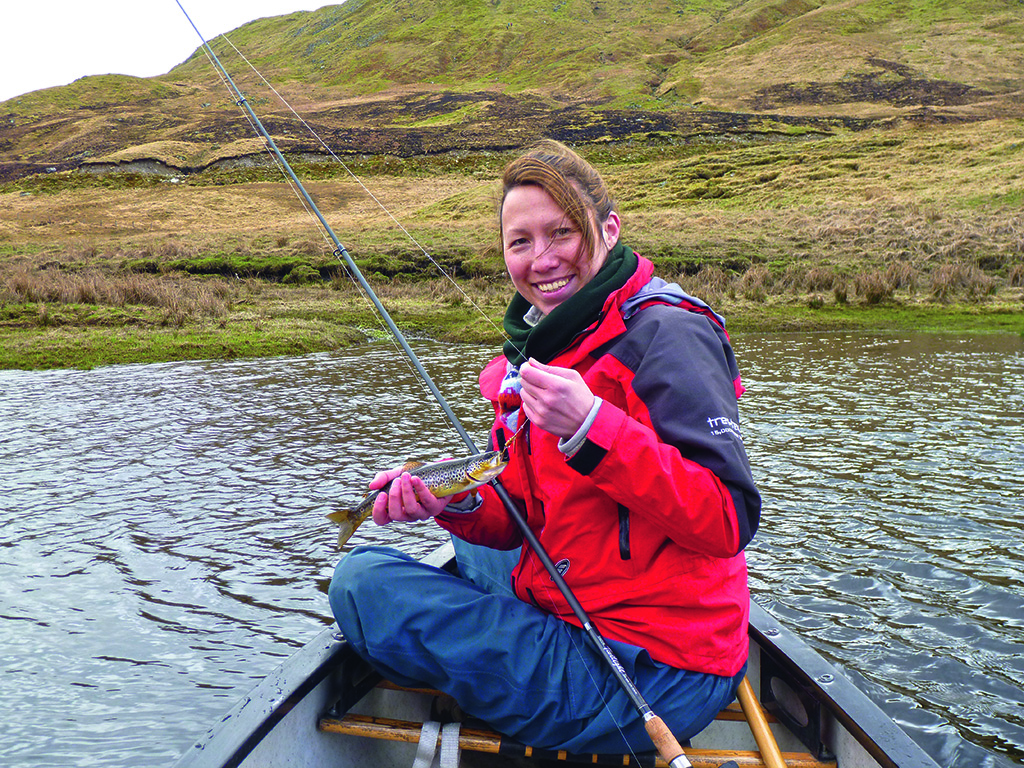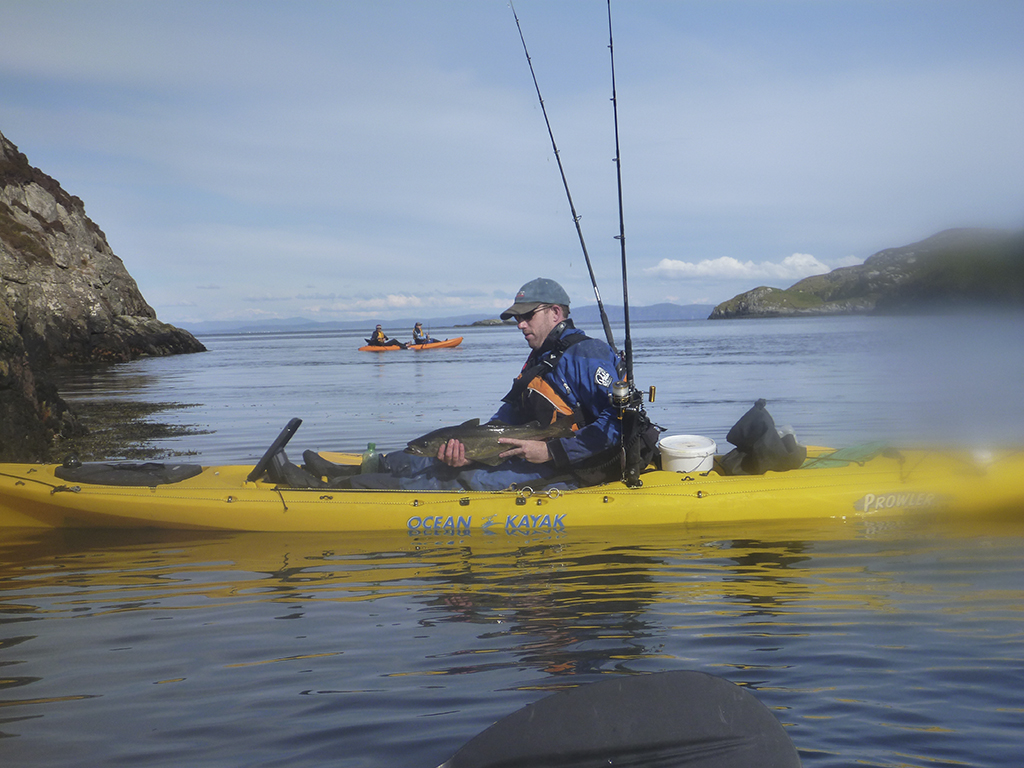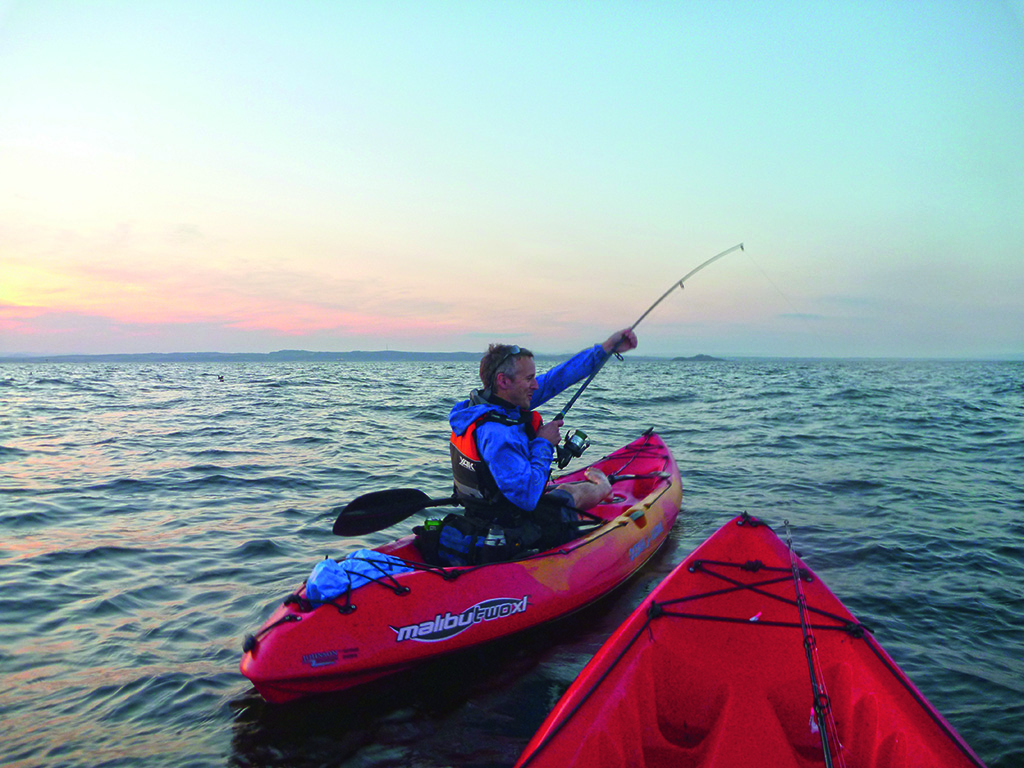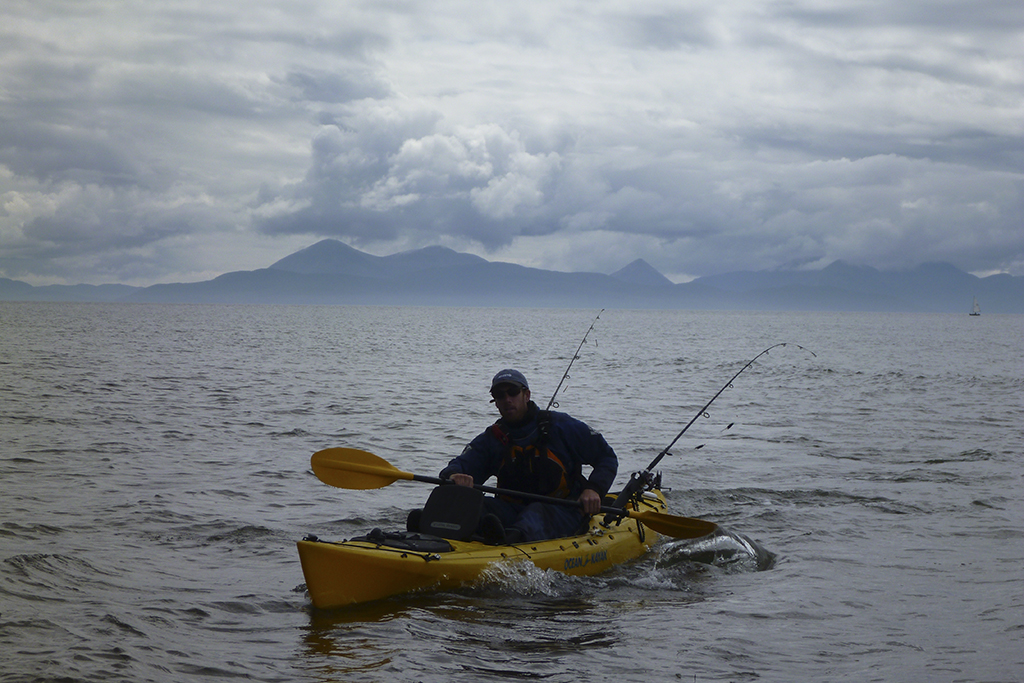
What lies beneath in the world kayak fishing
Fishing from sea kayaks for mackerel, sea trout, skate, pollock and gurnard has increased in popularity thanks to better equipment and an enchanting environment.
Kayak fishing offers a superb mix of adventure and fishing, whether in fresh water or the sea. Modern fishing kayaks provide a mechanism to access fishing grounds which would otherwise be beyond the range of beach casters while being relatively affordable, portable and generally quite stable water craft from which to explore new fishing opportunities.
The level of interest in kayak fishing has increased substantially in recent years, buoyed by greater accessibility to equipment and a range of more affordable boats.
Stores such as Decathlon and Tiso frequently sell sit-on-top kayaks alongside ‘closed cockpit’ boats of a more traditional nature but it is also possible to fish from Canadian canoes too, although the latter are better suited to inland waterways and lochs due to their vulnerability to the wind.
Whether you use a kayak for exploration, snorkelling or fishing there is something special about taking your craft to the water’s edge on a lovely calm day and setting off into the sea with a few paddle strokes to experience what the day will bring. Even if the fishing is meagre, the experience of being in a salt water environment is enchanting.

Ailsa Lindsay fishing for brown trout on Loch Lyon (Photo: Gair Brisbane)
I have been told the tale of a fisherman on the west coast catching a 110lb skate from a kayak and having to paddle to a pier and tie himself off to be able to bring the fish in, but even fishing for smaller fish like mackerel is a great thrill. It is not uncommon to have more than one athletic fish on at a time, heading in different directions from each other while you try to deal with each in turn and avoid hooking yourself on the remaining feathers. Such are the logistical challenges of kayak fishing.
A favourite approach used by myself and my fishing companions is to plan our departure with an outgoing tide, perhaps two to three hours after high tide, so that this assists our paddle out to sea. We can paddle at a more leisurely pace, trolling a line behind us, or drift in the current and fish our way through slack tide to reap the benefit of the incoming tide on our return journey to shore.
This has been especially useful in locations such as Loch Euphoirt in North Uist, where we drift eastwards down the loch taking great pleasure in watching otters and sea eagles fish the narrow gap where the loch meets the sea. Here we have caught good pollock (including one from the kayak of around 5.5lbs), gurnard, lance and mackerel before returning back to the cars on the flow.
Our coastline and islands really lend themselves to being explored by kayak, but caution is required to avoid putting yourself in danger because the currents can be strong and the tide can turn in a matter of seconds. You may see the seaweed straining in one direction only to flip in a moment and be stretched in the opposite. Weather, wind and tide are important factors to know, but consider also the landscape, where narrow gaps may have a tidal race exacerbating the effect of the tide.

Fishing in North Uist (Photo: Gair Brisbane)
Earlier this year a trip to the Isle of Mull was proving to be challenging due to high winds, but a welcome lunch break on an island near Inch Kenneth provided some of the best sport of the week, with pollock up to 6.5lbs and one snapped rod.
There was good freshwater fishing too as we fished the fly on lochs. None of the fish were of a substantial size but the ability to cover the water and do so quietly around areas where the vegetation was dense right up to the water’s edge made the kayaks a brilliant addition. In theory the kayaks should have allowed us to find where the wind was channelling through to keep the midges away but for periods at a time the wind would die and a near panic would ensue as we reached for midge headnets, bug juice and smoking kit, hoping in vain that one of them would work.
Much closer to home, Portobello beach holds good mackerel during the summer months. When the light nights allow, a post work paddle is a beautiful way to spend an evening, no more than 1km from the beach and with Arthurs Seat as your backdrop. As the light fades behind the hill on a still night the sky turns an amazing red and the sea can turn to a glassy deep blue. The mackerel I’ve caught there have weighed up to 1.5lbs and are solid too. We have tried to foray further afield, paddling to Musselburgh around the mouth of the River Esk, but to no avail so far.

Craig Scott enjoys Portobello in the pink (Photo: Gair Brisbane)
Favoured fishing tackle for mackerel and pollock is a boat rod of around 6ft 7in and a multiplier reel with 20-30lb line. We fish feathers for mackerel and pollock but also lures – sometimes using a small telescopic rod and traditional spinning reel – for a chance at sea trout in the brackish water where salty and fresh mix. We’ve also had a few pollock on the fly – they have a tendency to head for deep water and weeds when hooked, so a stout fly rod is required so that you can steer the fish rather than being at their mercy.
Mackerel usually sit in water from just seven metres to as deep as 60 metres and will take at a variety of depths. Where there is one, there are usually more. Pollock tend to prefer rocky or weedy areas and, while they can be caught during the day, they tend to be deeper. At night I have caught them at shallower depths and when caught on the fly it has been in the late evening and from rocks rather than the kayak.
Modern sit-on-top kayaks are generally stable and very good water craft but safety is, of course, a real concern. Good preparation will help keep you safe and hopefully also help you catch more fish. Local knowledge of where there are underwater features can help with the fishing, but the same locals will likely know of tides or currents to watch out for.

Kayak fishing in Torridon (Photo: Gair Brisbane)
Websites such as the Norwegian weather forecast and windguru for wind reports help you to ensure that you will not spend your day fighting against a wind to get out to sea or, more importantly, back in to shore.
Modern Personal Flotation Devices (PFD) designed for kayak fishing not only provide security and warmth but they also have extra pockets for tackle and pouches for drinks bladders too.
With my first kayak I practiced capsizing it to see what the limits of it were. I was surprised at the angle that I could lean to one side and still recover the boat but controlled capsize drills are worthwhile practising with someone to ‘buddy’ you.
There are great kayak safety tips online, for example, the RNLI provide a comprehensive kayak safety guide and manufacturer Ocean Kayak provide safety information along with advice on how to choose a kayak.
TAGS

